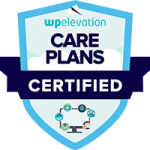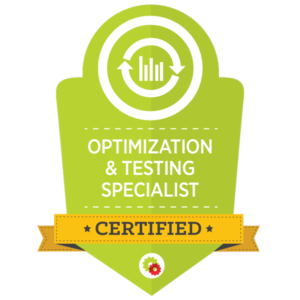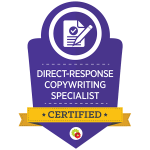In order to rank well on Google and other major search engines such as Bing and Yandex, your website needs a strong content foundation. When you are optimizing your content for search engines, you need to make sure that you have covered all aspects of basic SEO (search engine optimization) in order to get the most organic traffic to your site. This means things like having the right keywords in your title tag and meta description, using webmaster tools correctly, having proper navigation structure and creating good content. Together, these aspects of SEO will help increase organic traffic flow onto your website without any extra work!
A good web design contains a lot of aspects, but three important considerations are navigation structure, quality content, and SEO best practices. With these points in mind, you will have a website that is successful for both visitors and your business!
This guide to SEO will cover the basics of SEO. If you are new to SEO it is a good starting point to get your website ranking in the search results for your chosen keywords.
What is SEO?
SEO is the process of increasing your website’s visibility in search engine rankings. It works by using specific keyword phrases, or “keywords,” to reach the desired audience and make them aware that you exist as an organization or business.
How does SEO work?
Search engines work by using algorithms to rank websites for particular search terms. The algorithms take into account a number of factors to determine which sites rank for each keyword. SEO then comes in and helps you identify the keywords or phrases that people are using when they search online so that your site pages are ranked higher than others.
Relevance and Authority: These are two of the most important factors in search engine ranking algorithms. They determine how well your web pages will rank for various keywords. Search engines like Google want to show you what it thinks you’re looking for so they use these two criteria to decide where each site should appear in organic search results
How can I use SEO to grow my business?
The ultimate goal of any website owner should be to create a website that is easily found by prospective clients and has the appropriate content to keep them engaged and answer their questions. With SEO techniques in place, you can identify which keywords your target audience is using when they search online and you can write content to help your pages show up in their organic search. It also helps make sure your site ranks higher than others who might have less relevant content.
How can I use basic SEO to rank higher?
The first thing you need is a list of words or phrases related to your business. It’s best if those words are actually used in the content on your website, but even just listing them out will help you plan your content creation strategy. Next, research what other sites have done with these same keywords and how they’ve used them on their site. You can do this by entering a keyword into Google’s search bar followed by “intitle:site” and then hitting enter, which will show you the results of all sites that have words in common with yours in the title tag. This competitor research is just plain marketing good sense.
Once you know what other people are doing to rank well, you can do the same thing while following Google’s guidelines for writing quality content. You might also want to ask a friend who knows about SEO what they think of your chosen words and if there are any others that would help (or hurt) ranking better than these. It’s often useful to ask a customer for feedback on what drove them to your website in the first place.
There are many ways to improve your site’s ranking on Google – updating links, changing the content, writing blog posts and following the seo basics listed below.
Tips for Better Search Engine Optimization: Start with the SEO Basics!
Use your keyword list to include your target words in your title tags and meta descriptions. This is a simple thing that can significantly increase traffic flow onto your website! This needs to be done for all the pages and posts that are present on your website. It will help search engines understand what your website is about. Including these words in titles, meta descriptions and content areas lets the search engines know what’s inside your site without having to read every word. Using your keyword near the beginning of your title tag is also a ranking factor.
Use webmaster tools correctly, including site maps and robots.txt files. These things will help Google understand what content they should be indexing. Use Webmaster tools like Google Analytics and Google Search Console. These tools will help you understand which search queries you are being found for and where the traffic to your website is coming from. It will also tell you if there are any issues on your website or inbound links that need to be fixed.
A search engine optimization campaign should include keyword research, content marketing and link building. Keyword research is the process of finding out what people are searching for online related to your industry or business. You can choose which search engine and even country to use for the research. This can be done with free tools like Google Adwords or Bing.
Content marketing is the process of creating content on your websites that people are interested in reading, watching and sharing with other potential customers. It can be done by starting a blog on your website about topics related to your business. This will attract readers who might then click through to read more articles you have written which could lead them to make a purchase.
Link building is the process of getting other websites that have relevant content on your website and linking back to it. If someone is looking for information about what you do online, they might find it on another site that links back to yours. That will help you get more traffic.
These are all basic steps in SEO that can help you rank better on Google or the other search engines.
Another must-have is a proper navigation structure. How are users supposed to find your content if they can’t even navigate it? A good user experience is important for your website visitors. Good site architecture also makes it easier for visitors to find the information they want on your website without having to scroll too far or jump around a lot. This also helps readers find what they’re looking for quickly! Create a different navigation structure for your mobile visitors to keep it simple and easy to use.
Content is King When It Comes To Search Rankings
Create quality content that is keyword dense and informative for the user.
Base your content on good keyword research – find the right keywords for the content on your site to help you rank in a Google search. Create content that is relevant to your visitors and your business.
Be consistent with publishing frequency, and publish often. This will help you build an audience base that trusts your expertise in this area of business. Use internal links to link to other relevant content on your site.
Get rid of duplicate content so Google knows that this website is only about one thing. Quality content is very important for good SEO. Having duplicate content on your website will hurt your ranking in the organic search results.
Keyword Research: Your SEO Starting Point
It’s important to use words and phrases in your content that you want to rank well for in a Google search, so it’s key to do proper keyword research before writing any content in order to know what people are looking for.
Make sure your content strategy starts with keyword research. Find the top 20 keywords you want to rank for and plug them into Google’s Keyword Tool (keywordtool.io) to see how competitive they are on a scale of 0-100, with 100 being most competitive.
If a keyword is in the top 100 on Google, you need to be extremely competitive in order to rank for it and show up high in the search results. That elusive first page is harder for some words than ohers.
Start by targeting keywords in the top 20 that are less competitive: target keywords that are below 30 and slowly work your way up the scale from there.
It’s also important to use your keyword throughout your content – but not too often so you come off sounding spammy and unnatural. Find an appropriate balance between how much you mention it, where you mention it, and what words surround those mentions for your audience.
Start by upping the quality of your content. Make sure it’s actionable and offers value to users looking for a solution – don’t just use filler words that will please search engines instead of people. Your content needs to be readable and conversational. Above all, it should be relevant to the keyword or phrase you are targetting.
When you’re writing a blog post, it’s important to remember that your readers don’t want just dry facts – they want a story. Give them insight into what makes you so knowledgeable on this topic and why they should listen to what you say. Emotions are contagious- people can feel when something is genuine or not so much. Trust is something that can be earned, so let your readers know who you are and what motivates you.
Quality is so important because Google ranks pages higher if they are more relevant to what people are searching for. If someone finds the answer on your pages – that makes you an authority on the subject.
Create a keyword list that is relevant, contains words with high search volume and low competition. You will use this wordlist for creating content that includes titles, headings, meta descriptions. It will guide your content creation. However, the content needs to read naturally for your visitors and not just be paragraphs stuffed with the words you are hoping to rank for on Google.
Use your list words in the text of your articles, blog posts and pages. Don’t use them over and over again; mix up words that are related to each other but not identical. Google uses more complicated algorithms than a simple word count, so don’t think quantity is everything when it comes to ranking factors. Google also understands synonyms so feel free to change it up a bit.
Make sure your title tags are descriptive, relevant to the content and include keywords. Use an SEO plugin to preview how your title and meta description will look.
If possible use a keyword in your URL so that Google knows what it is about. For example: [cat training blog] rather than just catblog.
Include keywords in your headings – try to be as specific as you can with these while still sticking to the rules of grammar. If you have a heading or title that is more general, make sure to include a keyword in a subheading. You can add subtitles to your content so Google knows how it relates with other content on your site. This will assist Google to rank you higher in their search results.
If you have an image, make sure to include a caption with the necessary relevant text and use words instead of just using symbols or numbers. This will let Google know what it is about by giving them more context on what they’re seeing in front of their eyes! (Except they’re bots and don’t actually have eyes!)
Other Important Ranking Factors
Make sure your site is responsive. You don’t want to lose any potential organic search traffic because they can’t see the content on mobile devices! Mobile friendly websites are a must-have to get good search rankings. User experience is just as important on mobile devices as on desktops and some might say more important with the new ranking factors being introduced by Google.
Use social media to your advantage. If you can get the word out about what a great website you have, it will be easier for people to find and share with their friends! Sharing your content on social media should be part of your marketing and SEO strategy.
Add relevant images to your page and make sure you add your keywords to the ALT descriptions. This will help your SEO efforts.
Link building and internal links are important to basic SEO
Include links to other pages on your site if they are relevant to the topic being discussed. Include links in your posts, articles and pages that will help readers find more content on your website by linking out to other related topics or blog post titles from other authors.
Use relevant words or phrases in links when linking out from posts, articles and pages – don’t use words that are not appropriate.
Try to get other authority websites to include links back to your articles and pages. This is a great way to build quality backlinks for your website.
Link building is important not just for the sake of search engine optimization but also so that you can get more traffic to your website. Links are better if they come from trusted sites – so the quality of the inbound link is also important to search engine optimization.
Guest blogging is also another powerful SEO strategy because it builds backlinks; however, it must be done properly and strategically in order to rank well on Google.
Technical SEO: Another Ranking Factor
Search engine optimization isn’t all about content on your pages. Ranking higher in the major search engines sometimes takes more than adding posts to your blog.
The first step to technical SEO is checking for broken links. This includes hyperlinks and images that are not found on the website, 404 errors, and any other type of link or text which has a URL in it but does not lead anywhere (broken). It’s important to make sure these URLs are being redirected properly so visitors don’t end up with 404 errors.
A second step would be to check for broken images, which are pictures that have no dimensions or extension and appear blank on the website when clicked. These should also be redirected so visitors do not click them expecting a picture but get nothing instead. Broken links and missing pictures can make it difficult for search engine spiders such as Google to gather information about your site.
The third step in technical SEO is to check for images without a proper filename, extension, or dimensions. This can happen if you download an image from the internet and change its name before uploading it to your website, which makes the picture difficult for search engine spiders to identify .
Page speed is a big ranking factor for Google, so it’s important to make sure that your pages load quickly and efficiently. Image size is also important because if your images are too large it can slow down the loading of your website and turn visitors away. Always optimize your images before uploading them and use an image compression tool on your website.
404 errors can happen at any time on the web page; however, when they do occur you want to fix them or create a 404 error page on your website as soon as possible so that visitors can find the information or links they need.
Broken links are another issue that website owners will run into. Web developers and designers need to take the time to make sure these don’t happen by checking for broken links before launch or as soon as possible after they occur.
Take advantage of “Google’s Featured Snippets” by making sure you show up as a snippet in search results for your most important keywords. This is done by having relevant text at the top and center of the page, with an answer that includes enough detail so there’s no need to click through to another page.
Instruct the Search Engines What To Index
Create an XML sitemap to help search engines discover your site’s content. Provide this sitemap to Google so the bots can index all of the pages on your website. Upload the XML sitemap to Google Webmaster Tools to tell Google to index your site and which pages to visit. You can instruct the search engines to not index or not follow a page by using ‘nofollow’ or ‘noindex’ tags. These pages can be omitted from your site map.
Submit the URL of individual articles and blog posts in the Google Webmaster Tools so that they can be crawled by Googlebot.
Create an HTML sitemap for your site. This helps with internal links and can make a nice visual for your visitors. Most SEO plugins such as SEOPress or Yoast will create an HTML sitemap that you can use on your websites.
How do beginners do SEO?
Even if you know very little about search engine optimization you can still follow this guide to SEO and improve your search engine rankings. If you use WordPress for your website there are various easy-to-use plugins like SEOPress and All in One SEO that will help and guide your SEO efforts.
Once installed on your website they offer tips and guidance on how best to optimize your site to help search engines find your content.
It makes sense to spend some time trying to improve the organic traffic to your site. It should be built into your marketing strategy. Increasing your search traffic is a great, free marketing tool. Free is good, right? This simple guide to SEO includes a lot of tasks you can do yourself to improve your search results.
Can I do SEO on my own?
If you want to help search engines understand what your website is all about and to improve your position in the search engines, you should spend some time learning about SEO basics. Who doesn’t want more organic traffic to their website? You should always maximize your position in the search rankings through organic traffic before doing any paid ads.
As a business owner, you can create content for your users that at the same time will improve your position in the search results. That content can be used as marketing material to help in ranking your site. By looking at Google Analytics you can learn the SEO basics to see where you need to improve. Simply creating a good user experience for your users will help, particularly mobile users.
When is it time to get help for search engine optimization?
SEO is a complex field that requires many years of training and experience to master. Whilst you can do a lot on your own the chances are you will need professional help if you want your site to rank well on the search engine results pages (SERPS), particularly if you are trying to rank for a very competitive keyword.
If all else fails and you’re still not ranking well, it’s time to bring in the professionals. It might be that you have too many technical SEO issues that you can’t fix yourself.
Search engine optimization (SEO) is a complex process that can be quite daunting for the average business owner. However, it is absolutely essential to increase your site’s visibility on Google and other search engines if you want more visitors. To help simplify this task, we offer SEO services tailored specifically to meet your needs. We are professional experts in digital marketing who work with small businesses just like yours every day! If you are interested in learning more about our SEO service, please don’t hesitate to contact us today!












